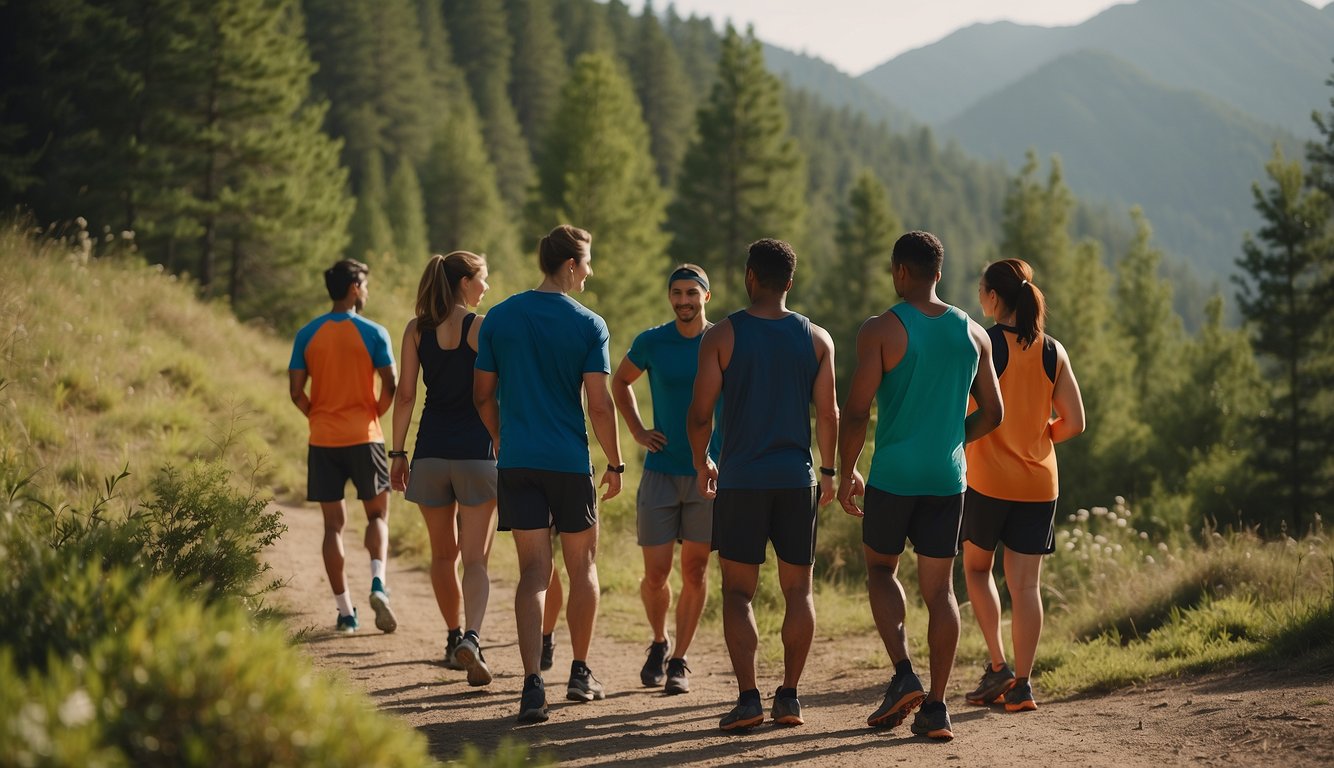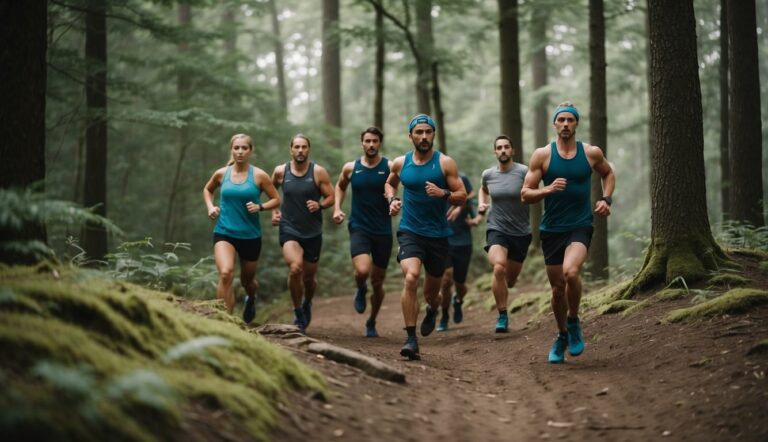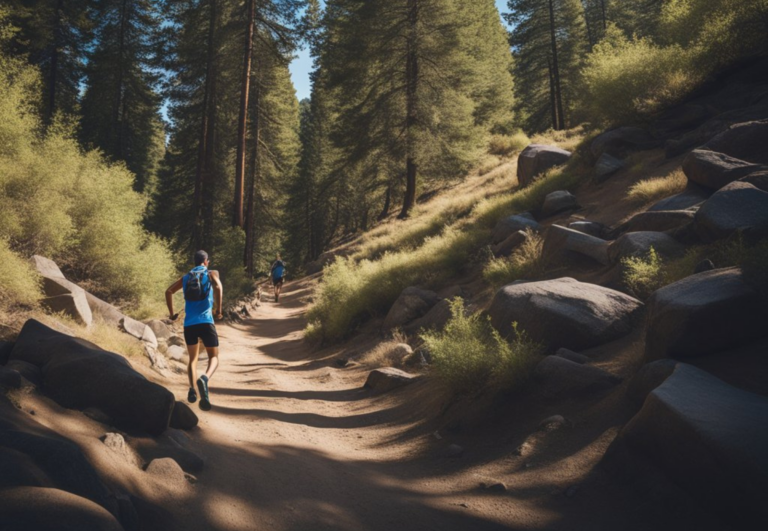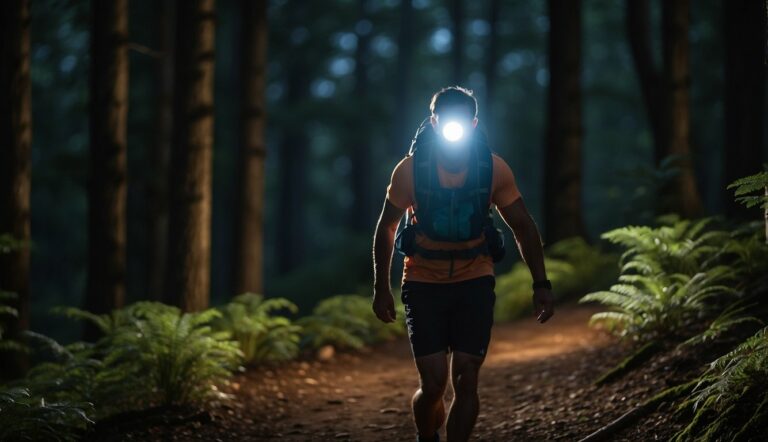Building a Trail Running Community: Steps to Create Local Clubs and Events
Building a trail running community brings the beauty of nature, the challenge of the terrain, and the collective enthusiasm of like-minded runners into a cohesive experience. As a UESCA certified running coach, I know that fostering a sense of community around trail running starts with a clear vision. This vision entails creating an inclusive environment that welcomes runners of all levels, encouraging them to explore local trails and embrace the sport’s camaraderie, discipline, and adventure.
Establishing a local running club is a tangible first step in nurturing this vision. It involves selecting a variety of trails that are not only safe and accessible but also offer diverse experiences to cater to different preferences and skill levels. Through such a club, members can find motivation and support, share tips and advice, and enjoy the collective achievement of reaching their running goals. Moreover, regular, well-organized events serve as milestones for the community, giving members opportunities to challenge themselves and celebrate their progress together.
Forming the Foundation of a Running Club
When establishing a trail running club, it’s crucial to lay a strong foundation. The key elements include a guiding mission statement, a solid club structure, and the right leadership to steer the organization towards its goals.
Developing a Mission Statement
A mission statement reflects the core purpose and values of a running club. It is a succinct proclamation that informs all other decisions:
- Purpose: I ensure the mission statement clearly states why the club exists and what it aims to achieve.
- Goals: The mission must align with the interests of the community, aiming to promote health, camaraderie, and love for running.
Choosing the Club Structure
The legal structure of a running club dictates its organization and operation. Here are two common choices:
- Nonprofit Organization: If the club’s revenue will support its activities or charitable causes.
- Corporation or Unincorporated Association: Based on the size and formality desired. A corporation requires more formal obligations, while an unincorporated association is less formal.
Electing Leadership Roles
Leadership is instrumental in guiding the running club. The typical roles filled include:
- President: The figurehead who steers the club in accordance with its mission.
- Treasurer: Handles the financial responsibilities to ensure fiscal health.
- Secretary: Maintains records and ensures effective communication within the club.
| Role | Responsibilities |
|---|---|
| President | Leadership, decision-making, club representation |
| Treasurer | Financial oversight, budgeting, account management |
| Secretary | Record-keeping, member correspondence, minutes taking |
Each role is pivotal and contributes to the smooth running and sustainability of the club.
Building Membership and Creating Camaraderie
To create a thriving trail running community, my focus is on recruiting enthusiastic members, ensuring an inclusive atmosphere, and maintaining a growing, engaged group. Each step is critical to fostering a strong sense of belonging and collaboration among runners.
Recruitment Strategies
My top recruitment tactics include:
- Group Runs: Regularly scheduled runs that cater to various skill levels, promoting togetherness.
- Social Media Platforms: Utilizing platforms like Facebook and Instagram to reach potential members and showcase the community’s activities and shared experiences.
- Local Events: Collaborating with local races and events to introduce the club and its values to a wider audience.
| Method | Description | Outcome |
|---|---|---|
| Social Media Engagement | Share stories, run photos, and event updates regularly. | Attracts new members and generates interest. |
| Collaboration with Stores | Partner with local running stores for promotions and talks. | Provides a real-world hub for recruiting runners. |
Fostering an Inclusive Environment
Inclusivity Principles:
- Welcome All Skill Levels: Activities designed to accommodate beginners to advanced runners.
- Create a Welcoming Space: Encouraging open dialogues about goals and challenges to ensure everyone feels heard.
| Action | Purpose |
|---|---|
| Highlight Diversity | Showcasing members’ diverse backgrounds |
| Accessibility | Ensuring events and runs are accessible |
Membership Retention and Growth
Effective Routines for Growth:
- Consistent Engagement: Frequent communication with members through newsletters and social media to keep them informed and involved.
- Volunteer Opportunities: Encourage members to take on roles and responsibilities, nurturing personal growth and investment in the club.
| Approach | Benefit |
|---|---|
| Regular Social Events | Strengthens relationships outside of runs. |
| Membership Fees | Transparent and offers value for services. |
By establishing clear recruitment strategies, an inclusive environment, and retaining members, my role is to guide the club towards sustained growth and a strong community spirit.
Organizing Group Runs and Training Sessions
As a UESCA certified running coach, I know the importance of meticulous planning and attention to detail when organizing group runs and training sessions. These elements foster a supportive environment and ensure that runners of all fitness levels can participate safely and effectively.
Planning Routes and Schedules
When scheduling group runs, I prioritize variety in running routes and terrain to keep training engaging. I select well-lit and safe trails, and I alternate between routes such as loops and out-and-backs. Here’s a simple schedule outlining a week that balances different route types:
| Day | Route Type | Description |
|---|---|---|
| Mon | Out-and-back | Flat terrain for steady pace |
| Wed | Loop | Hilly route for interval training |
| Fri | Trail | Uneven surfaces for coordination training |
Planning involves not only the route but also setting a consistent schedule that accommodates the group’s availability.
Managing Different Fitness Levels
Within my running club, I ensure adaptability for various fitness levels. This is achieved by:
- Grouping by Pace: Runners are grouped into pace-specific categories to match their abilities.
- Tailored Training Plans: Cater individualized training sessions within the club structure.
By doing this, every member feels challenged yet capable, promoting accountability and support among participants.
Safety and Injury Prevention
Safety is non-negotiable, and injury prevention is an essential part of our group ethos. We:
- Implement Warm-ups: Quick dynamic stretches to prepare the body.
- Educate on Nutrition: Advice on proper hydration and fuel during longer runs.
- Follow Trail Etiquette: Clear marking of routes and buddy systems for new trails.
With these principles, I instill a culture of safety that minimizes risks and encourages longevity in the sport.
Promoting Events and Social Media Engagement
Effective promotion and engagement tactics are vital for building a trail running community. Utilizing popular social media platforms and hosting local events are foundational strategies in gaining visibility and encouraging community participation.
Leveraging Social Media for Visibility
Facebook, Instagram, and Twitter are powerful tools for increasing event visibility. Here’s a strategy to leverage each platform effectively:
- Facebook: Create event pages and share them with local running groups. Use the ‘Invite’ feature to reach a wider audience.
- Instagram: Engage followers with high-quality images of trails and past events, tagging locations to attract local runners.
- Twitter: Regularly tweet about upcoming runs, using relevant hashtags to join bigger conversations.
Social Media Content Calendar Example:
| Day | |||
|---|---|---|---|
| Monday | Post event date and details | Share motivational quote | Tweet #MotivationMonday |
| Wednesday | Share a runner’s story | Post mid-run photo | Retweet running tips |
| Friday | Promote weekend group run | Story reminder for next event | Tweet #FitnessFriday |
| Sunday | Recap weekly activities | Post event highlights | Engage with race hashtags |
Remember, consistency in posting is key to maintaining your audience’s attention.
Hosting Local Races and Charity Runs
Local races and charity runs are not just events; they’re milestones for both seasoned athletes and beginners in your running club. To successfully organize these events:
- Plan: Choose a scenic and challenging trail for fun runs to appeal to a wide range of runners. Ensure safety measures are in place.
- Promote: Utilize all promotional materials including flyers and digital graphics across your social media to generate buzz.
- Community involvement: Partner with local businesses for sponsorships and local charities to boost community investment.
By hosting these races, you create an environment of achievement and charity that solidifies your brand in the local running scene.
Sustaining the Running Community

To ensure the long-term success of a trail running community, it’s crucial to engage with local businesses for support and to contribute actively to local charities and parks. These actions help to form a sustainable network of runners, volunteers, and supporters.
Engaging With Local Businesses and Sponsors
In my experience, forming partnerships with local businesses is essential for sustaining a running community. Running events and clubs can offer businesses valuable exposure, while businesses can provide critical support, either through sponsorship or volunteer engagement.
- Partnership Ideas:
- Sponsor race events to provide funding and goods.
- Host packet pickups or social events at business locations to drive foot traffic.
- Volunteer Incentives:
- Provide discounts or products for race volunteers.
- Host volunteer appreciation events sponsored by local businesses.
Contributing to Local Charities and Parks
The symbiosis between running communities and local charities can offer mutual benefits. By contributing to these organizations, we not only support vital community outreach but also encourage a sense of purpose within our network of runners.
Charity Collaboration:
- Organize charity runs where entry fees support local causes.
- Encourage runners to volunteer for charity events or park cleanups.
Parks Engagement:
- Partner with park services to maintain and improve trails.
- Host educational events on park preservation and trail etiquette.






